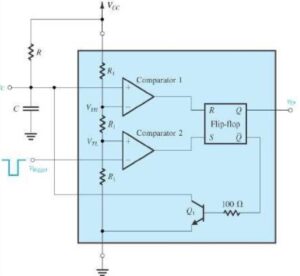Syllabus of Applied Chemistry – I ( BTEUP )
DETAILED CONTENTS
Chapter – 1 : Atomic Structure, Periodic Table and Chemical Bonding
1.1 Fundamental particles- mass and charges of electrons, protons and neutrons with names of the scientists who discovered these fundamental particles.
1.2 Bohr’s model of atom and successes and limitations of atomic theory (qualitative treatment only).
1.3 Atomic number, atomic mass number isotopes and isobars.
1.4 Definition of orbit and orbitals, shapes of s and p orbitals only, quantum numbers and their significance.
1.5 Aufbau’s principle, Pauli’s exclusion principle and Hund’s rule electronic configuration of elements with atomic number (Z) = 30 only. (Electronic configurations of elements with atomic number greater than 30 are excluded).
1.6 Modern periodic law and periodic table, groups and periods, classification of elements into s, p, d and f blocks (periodicity in properties – excluded).
1.7 Chemical bonding and cause of bonding and types such as ionic bond in NaCl sigma (σ) and pi (π) covalent bonds in H2, HCl, Cl2, elementary idea of hybridization in BeCl2, BF3, CH4, NH3 and H2O, VSEPR, Molecular orbital Theory.
1.8 States of Matter: Solid, Liquid & Gas, Metallic bonding- explanation with the help of electron gas (sea) model.
Chapter -2 : Fuels and Lubricants
2.1 Definition of fuel, classification of fuels, characteristics of good fuel, relative merits of gaseous, liquid and solid fuels.
2.2 Calorific value-higher calorific value, lower calorific value, determination of calorific value of solid or liquid fuel using Bomb calorimeter and numerical examples.
2.3 Coal – types of coal and proximate analysis of coal.
2.4 Fuel rating – Octane number and Cetane number, fuel-structural influence on Octane and Cetane numbers.
2.5 Gaseous fuels – chemical composition, calorific value and applications of natural gas (CNG), LPG, producer gas, water gas and biogas.
2.6 Elementary ideal on – hydrogen as future fuels, nuclear fuels.
2.7 Lubricants: Definition and properties, mechanism, industrial application and its function in bearings.
2.8 Synthetic lubricants and cutting fluids.
Chapter – 3 : Water
3.1 Demonstration of water resources on Earth using pie chart.
3.2 Classification of water – soft water and hard water, action of soap on hard water, types of hardness, causes of hardness, units of hardness – mg per liter (mgL-1) and part per million (ppm) and simple numerical, pH and buffer solutions and their applications.
3.3 Disadvantages caused by the use of hard water in domestic and boiler feed water. Primming and foaming and caustic embrittlement in boilers.
3.4 Removal of hardness -Permutit process and Ion-exchange process.
3.5 Physico-Chemical methods for Water Quality Testing
a) Determination of pH using pH meter, total dissolved solids (TDS).
b) Testing and Estimation of- alkalinity, indicator their types and application total hardness by EDTA method and O’Hener’s Method. (chemical reaction of EDTA method are excluded).
c) Understanding of Indian Water Quality standards as per WHO.
3.6 Natural water sterilization by chlorine and UV radiation and reverse osmosis.
3.7 Municipality waste water treatment. Definition of B.O.D and C.O.D.
Chapter – 4 : Electrochemistry
Redox Reaction, Electrode Potential, Nernst equation, Electrochemical cell (Galvanic and Electrobytes); Nernst equation.
Chapter – 5 : Corrosion and its Control
5.1 Definition of corrosion and factors affecting corrosion rate.
5.2 Theories of
a) Dry (chemical) corrosion- Pilling Bedworth rule
b) Wet corrosion in acidic atmosphere by hydrogen evolution mechanism
5.3 Definition of passivity and galvanic series.
5.4 Corrosion control:
a) Metal coatings – Cathodic protection, Cementation on Base Metal Steel – Application of Metal Zn (Sheradizing),Cr (Chromozing) and Al (Calorizing), Sacrificial protection and impressed current voltage
b) Inorganic coatings – Anodizing and phosphating.
c) Organic coatings – use of paints varnishes and enamels.
d) Internal corrosion preventive measures- alloying (with reference to passivating, neutralizing and inhibition) and heat treatment (quenching, annealing).
Chapter – 6 : Organic compounds, Polymers and Plastics
6.1 Classification of organic compounds and IUPAC Nomenclature.
6.2 Definition of polymer, monomer and degree of polymerization.
6.3 Brief introduction to addition and condensation polymers with suitable examples (PE, PS, PVC, Teflon, Nylon -66 and Bakelite).
6.4 Definition of plastics, thermo plastics and thermo setting plastics with suitable examples, distinctions between thermo and thermo setting plastics.
6.5 Applications of polymers in industry and daily life.





